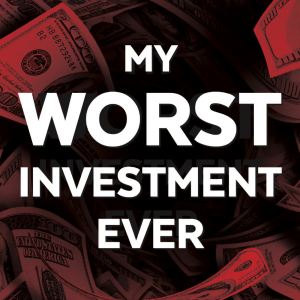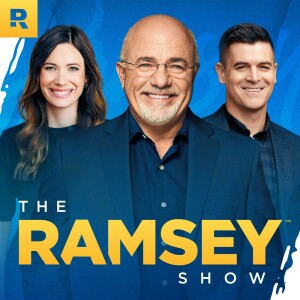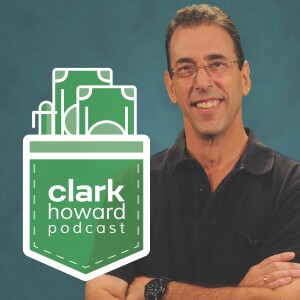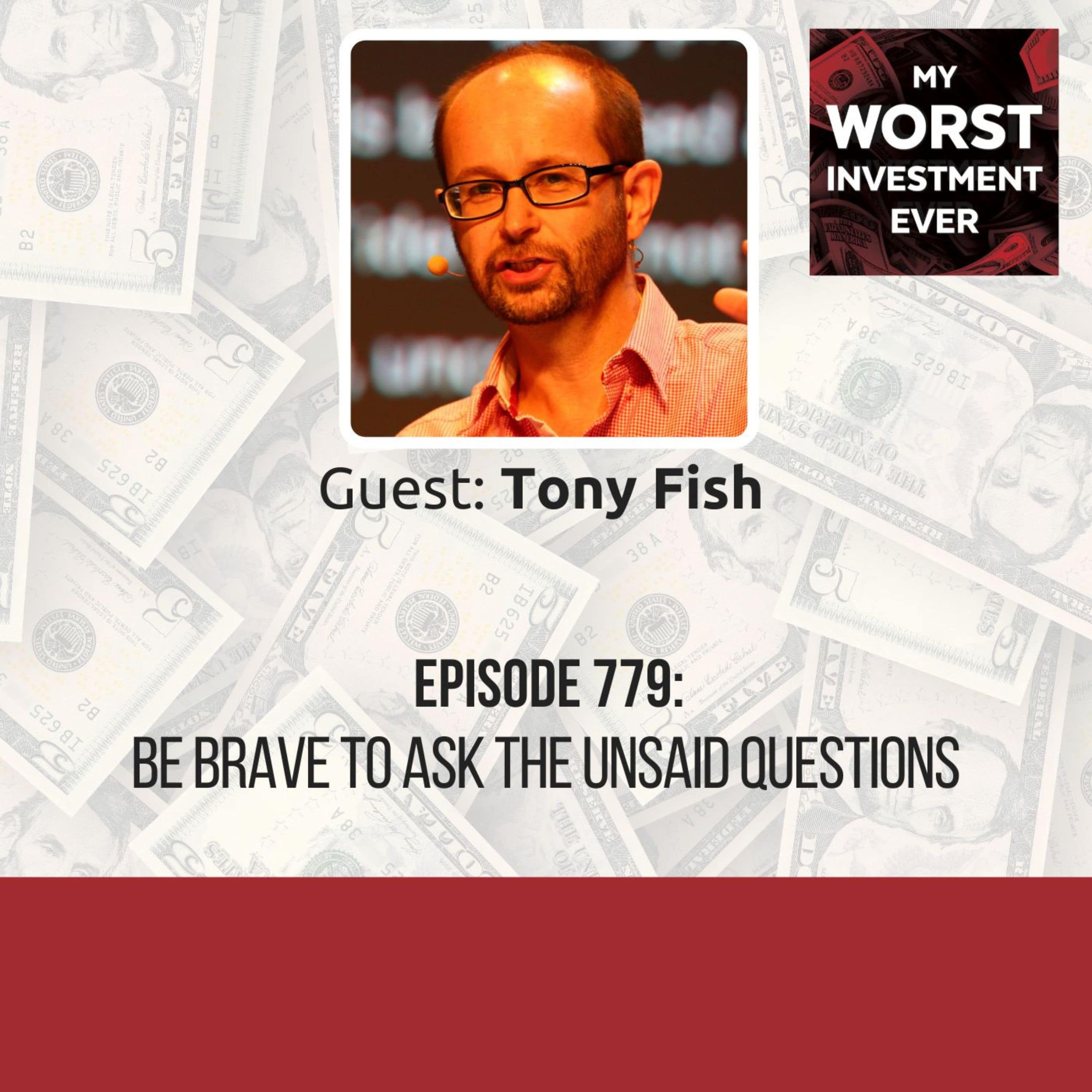
My Worst Investment Ever Podcast
Business:Investing
BIO: Tony Fish is a neuro-minority and a leading expert on decision-making, governance, and entrepreneurship in uncertain environments. His 30-year sense-making and foresight track record means he has been ahead on several technical revolutions.
STORY: In this episode, Tony talks about his newest book, Decision Making in Uncertain Times. How can we become more aware of the consequences of our actions tomorrow?
LEARNING: Ask better questions.
“It’s only through conversations with people like you, Andrew, that I can refine my questions. I love all the people you put on the show because they helped me articulate better what I think I’m optimizing for.”Tony Fish
Guest profile
Tony Fish is a neuro-minority and a leading expert on decision-making, governance, and entrepreneurship in uncertain environments. His 30-year sense-making and foresight track record means he has been ahead on several technical revolutions. His enthusiasm and drive are contagious & inspiring, especially for wicked problems. He has written and published six books, remains a visiting Fellow at Henley Business School for Entrepreneurship and Innovation, Entrepreneurs-in-residence (EIR) at Bradford School of Management, teaches at London Business School and the London School of Economics in AI and Ethics, and is a European Commission (EC) expert for Big Data.
Tony was a guest on Ep261: CEOs Can Defraud a Business in Very Hard to Detect Ways. In this episode, Tony talks about his newest book, Decision Making in Uncertain Times - How can we become more aware of the consequences of our actions on tomorrow?
The unsaid questionsTony struggled with how to ask better questions. He says there are two forms of questions. There are questions that we all ask, such as how are you performing? What are you doing? How are you feeling?
Then there’s a pile of what Tony termed the unsaid questions. He says that we don’t ask these questions because, politically, we can’t ask them. We emotionally feel we’re not able to, especially if we don’t know the person well enough or when somebody tells us not to ask that type of question. The trouble with a board is that if members don’t ask the unsaid, they won’t be able to discharge their fiduciary duties. Therefore, we need better frameworks to find questions we didn’t know we needed to ask.
So, how do we ask those questions? Tony has a whole book on how he does it. When the book gets shared, other people will read it, and they’ll come up with better questions than he has.
Principle versus riskAccording to Tony, when a board starts, it has all these principles outlined and tries to uphold them. But you realize later on as a board that you can’t manage principles. What you can manage is risk frameworks. But you can’t manage risk rating frameworks without rules. So, you create rules that allow you to manage risk. After creating the rules, you become managed against the free-risk framework you believe in because it aligns with your principles.
However, over time, the rules stop working, and those rules have to have another rule because there’s an exception to a rule. Tony says that when a new rule is created, or a new procedure or methodology comes along, a board should go back and question if that rule is aligned with its purpose, not whether it is helping the board manage the risk framework better.
Over time, you’ll have your purpose clearly and start seeing a massive drift between what you believe you set up and what the risk frameworks and rules allow you to manage. Tony’s challenge to boards is that every time a new rule is created, it should go to the board, and the board should make a judgment call on whether that rule is aligned with its purpose.
Role of a boardAccording to Tony, a board needs clarity on the tasks, the processes, the strategy, the purpose, and the North Star. It’s easy for boards to focus on tasks, processes, and strategy, but they find it difficult to focus on purpose and North Star. Most times, people only question whether they’re doing the right thing. He adds that a board has to be guided by data, rules, and regulations. But then it has to be directed by the values it wants and the organization’s values, which then comes back to the principles. The issue most boards face is that others’ values, principles, and behaviors are far more instrumental in a board’s values than they ever realized.
Then you’ve got a fundamental issue: Too many people end up on boards without board training. The untrained board members end up replicating management meetings as board meetings, believing that’s what they should be doing.
How to set up a boardTony believes that everybody follows an S curve. When you’re in the different phases of going up the S curve, you need other types of governance. However, many people don’t transition as they go up the S curve.
When in a particular phase, try to find the board that can do the next part, not the current one. And therein lies the difficulty for so many board members because they want to do what they’re good at and, therefore, stay in their comfort zones. This curtails the ability of the company to scale. What the board should be doing is asking: what do you do? Where are the transitions? How do you go about thinking? What are the processes and procedures? What skills do you need at the different layers as you go up?
About the bookTony’s book contains ten short frameworks. The idea is not to explain everything but to help the reader peel back the layers of the falsehood that they think they know what they’re doing, yet they haven’t got a clue. Tony wants you to make better choices and decisions by asking better questions.
The book is most accessible on Amazon, where you can purchase it in hardcover, softcover, or Kindle. You can also get a free PDF copy at www.peakparadox.com/book. If you want to reach out to Tony, he’s on LinkedIn.
[spp-transcript]
Connect with Tony Fish- Website
- Blog
- Book
Andrew’s books
- How to Start Building Your Wealth Investing in the Stock Market
- My Worst Investment Ever
- 9 Valuation Mistakes and How to Avoid Them
- Transform Your Business with Dr.Deming’s 14 Points
Andrew’s online programs
- Valuation Master Class
- The Become a Better Investor Community
- How to Start Building Your Wealth Investing in the Stock Market
- Finance Made Ridiculously Simple
- FVMR Investing: Quantamental Investing Across the World
- Become a Great Presenter and Increase Your Influence
- Transform Your Business with Dr. Deming’s 14 Points
- Achieve Your Goals
Connect with Andrew Stotz:
- astotz.com
- Threads
- YouTube
- My Worst Investment Ever Podcast
More Episodes
ISMS 11: US Banking Crisis and Fed Rate Cut
 2023-03-20
2023-03-20
ISMS 10: US CPI Could Decline to 4% By YE23; Unless QE Revs Up
 2023-03-20
2023-03-20
Michelle Leder – Read the 10-K Before You Buy That Stock
 2023-03-19
2023-03-19
ISMS 9: Saving Silicon Valley Bank Brings New Risks
 2023-03-15
2023-03-15
Dave Collum – What Should the US Be Doing in Ukraine?
 2023-03-15
2023-03-15
Bill Blain – Always Sell Fast in a Difficult Market
 2023-03-14
2023-03-14
Jeroen Blokland – Know the Actual Business Outlook Before Investing
 2023-03-12
2023-03-12
ISMS 8: Larry Swedroe – Are You Overconfident in Your Skills?
 2023-03-09
2023-03-09
Brian Feroldi – Be Careful When Trading Options
 2023-03-08
2023-03-08
Matt LeBris – Prepare for the Downs During the Uptime
 2023-03-07
2023-03-07
Pim van Vliet – Just Because It’s Cheap Doesn’t Mean You Have to Buy It
 2023-03-05
2023-03-05
ISMS 7: Financials, Cons. Disc., and Utilities Sectors Look Most Interesting
 2023-03-02
2023-03-02
Logan Nathan – Your Supplier Is an Extension of Your Business, Not an Outsider
 2023-03-01
2023-03-01
Louis-Vincent Gave – Your Success Comes Down to Portfolio Sizing
 2023-02-28
2023-02-28
Adam Rosen – Build to Sell From the Start
 2023-02-26
2023-02-26
ISMS 6: UK Looks Most Interesting Among the Top 5 Stock Markets
 2023-02-23
2023-02-23
Terri Spath – Always Know When to Buy and When to Fold
 2023-02-22
2023-02-22
Brett Martin – Fix Your Partnership or Quit It
 2023-02-21
2023-02-21
Damon Pistulka – Be Careful of Concentration Risk
 2023-02-19
2023-02-19
ISMS 5: How Rising Rates and Oil Prices Are Contributing to 6.4% Inflation in the US
 2023-02-16
2023-02-16
Create your
podcast in
minutes
- Full-featured podcast site
- Unlimited storage and bandwidth
- Comprehensive podcast stats
- Distribute to Apple Podcasts, Spotify, and more
- Make money with your podcast
It is Free
You may also like

Get Creative with Pace Morby


U.S Property Podcast


Aligned Money Show


The Ramsey Show


The Clark Howard Podcast


- Privacy Policy
- Cookie Policy
- Terms of Use
- Consent Preferences
- Copyright © 2015-2024 Podbean.com



 iOS
iOS Android
Android